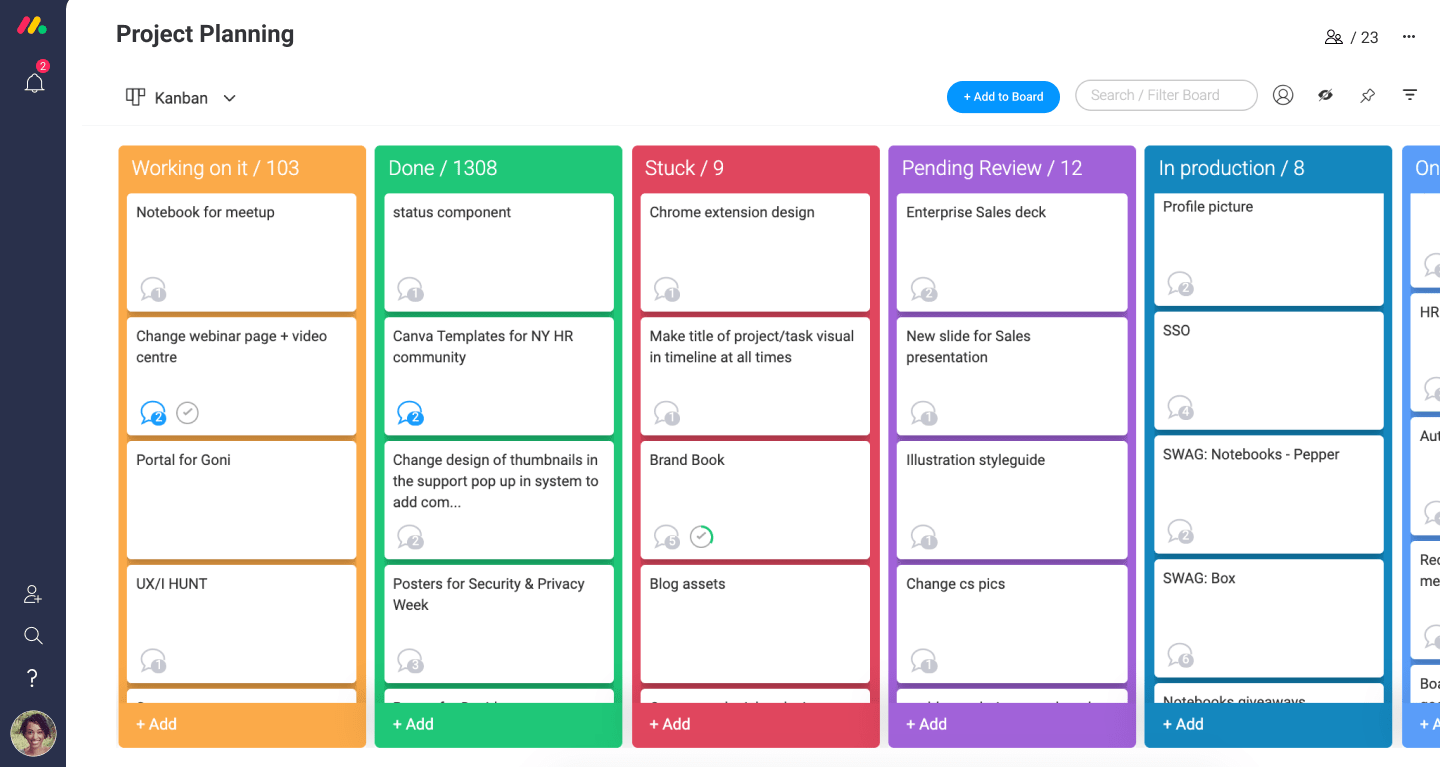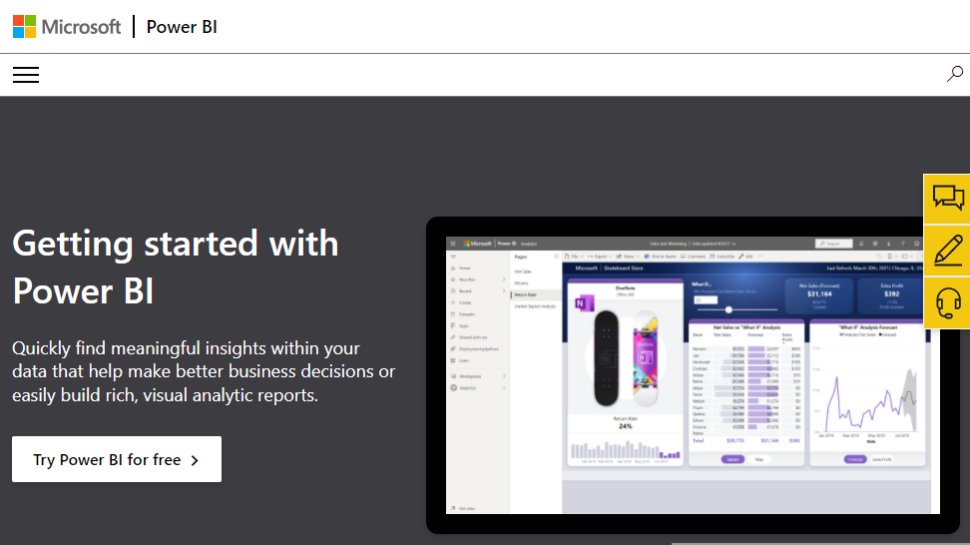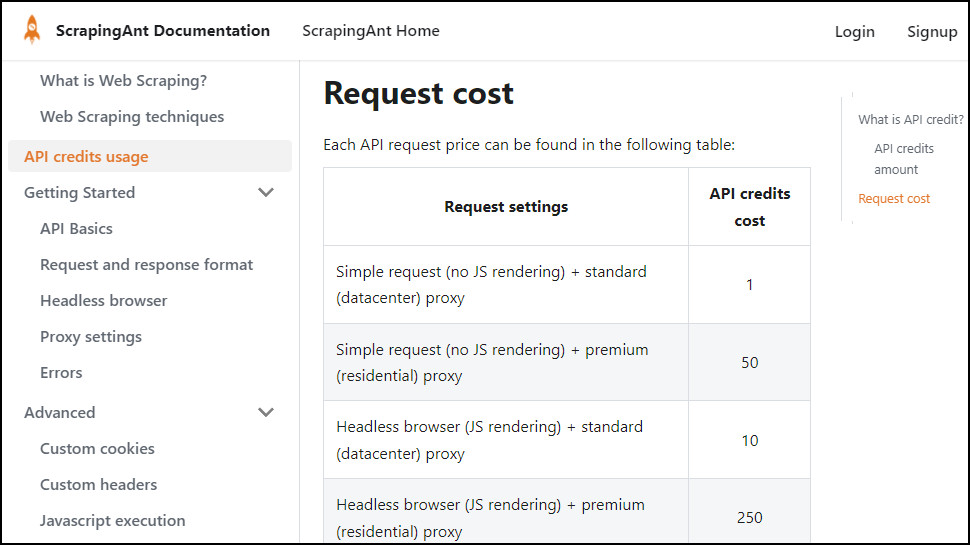Here are the 30 most common CRM terms and what they mean
The most common CRM terms explained

- 1. Customer acquisition cost (CAC)
- 2. Customer engagement
- 3. Customer journey map
- 4. Email marketing
- 5. Marketing funnel
- 6. Lead conversion
- 7. Sales pipeline
- 8. Social selling
- 9. Gantt charts
- 10. Integrations
- 11. Kanban view
- 12. Purchase order
- 13. On-premise
- 14. Annual contract value (ACV)
- 15. BANT framework
- 16. Key performance indicators (KPIs)
- 17. Marketing-qualified lead (MQL)
- 18. Net Promoter Score (NPS)
- 19. 360-degree customer view
- 20. Business intelligence
- 21. Campaign
- 22. Application program interface (API)
- 23. CSV file
- 24. Dashboard
- 25. Segmentation
- 26. Service-level agreement (SLA)
- 27. Indemnify and hold
- 28. Drip campaign
- 29. Cross-selling
- 30. Opportunity management
The CRM market has a rich history and even if you limit yourself to looking at just the very best CRM software available, there are still a lot of different tools worthy of your consideration. That’s without looking more specifically at the different industry sub-sectors that leverage CRM platforms to engage with customers, whether that includes real estate firms, insurance providers, or sales personnel.
Altogether then, there’s quite a lot to get your head around concerning CRM solutions. One of the first things you should do is ensure that you understand the language being used when speaking about CRM.
Below, we’ve outlined 30 of the most common CRM terms used today and explained exactly what they mean. If there’s anything about CRM that you remain unsure of, this article should help clear things up.
Reader Offer: Save 18% on Monday.com annual memberships
Monday.com is an easy-to-use and customizable work management platform, enabling teams of all sizes to plan, manage and centralize work. Get started now and boost your team's communication and productivity.
Preferred partner (What does this mean?)
30 common CRM terms and what they mean
1. Customer acquisition cost (CAC)
One of the main benefits of CRM software is the way that it supports the growth of your customer base. However, acquiring new customers isn’t free - there may be marketing, product development, and other costs to factor in.
The customer acquisition cost (CAC) is a straightforward number that shows business how much it wil cost to secure a new customer. It puts a figure on the money needed to move them through the funnel. With that decided, it becomes easier for businesses to set budgets and predict profitability.
2. Customer engagement
Customer engagement concerns the development of the customer relationship which extends beyond the purchase itself. Engagement can be fostered through various communication channels, from social networks to live chat software, but benefits from being intentional and consistent. Not only does this mean encouraging customer loyalty by continuously revisiting interactions, but also being consistent in your messaging.
Every interaction has a role to play in strengthening (or diminishing) customer engagement. This one of the great strengths of CRM software - it provides a centralized dashboard where all these interactions can be viewed and analyzed, whether they take place over WhatsApp or telephone. CRM tools can even provide a customer engagement score based on these interactions.
Sign up to the TechRadar Pro newsletter to get all the top news, opinion, features and guidance your business needs to succeed!
3. Customer journey map
A customer’s interaction with a brand is not only about a sale or even a single moment. In reality, customers go on a journey with a particular business. It usually starts with awareness of a product or service. Then, there may be some research undertaken, via recommendations, online searches, or dialogue with the company in question. Then, perhaps, the customer may convert.
At any point in the journey, companies can seal the deal or scupper a potential sale so it’s essential they monitor interactions carefully. A customer journey map provides a clear depiction of these interactions, usually through a diagram illustrating the different stages of engagement that customers go through. By mapping journeys in a straightforward manner, brands are more likely to have journeys that end in conversion than cart abandonment.
4. Email marketing
There are many different approaches to marketing these days. There are television ads. social media channels, online banners and many other ways to get your products in front of potential customers. However, even as new channels appear, good old-fashioned email marketing still has a role to play.
Email marketing makes use of the customer information stored within your CRM to launch personalized campaigngs. When aligned with the right CRM tool, email marketing may involve newsletters and product adverts (possibly based on previous interactions between customer and brand). CRMs can also add automation, reporting, and analytics on top of traditional email marketing to derive further insights.
5. Marketing funnel
A marketing funnel outlines the different stages within the customer journey and how your brand can best reach out to them. By leveraging the analytics featured within your CRM, a marketing funnel will tell you what your brand should do to influence consumers at each stage.
Usually, the marketing funnel is segmented into three different parts - the Top of the Funnel (TOFU), the Middle of the Funnel (MOFU), and the Bottom of the Funnel (BOFU). As customers make their way down the funnel, they get closer to making a purchase. The most effective marketing will also necessarily change as they get closer to this decision.
6. Lead conversion
Before an individual becomes a customer, they start out as a lead. Perhaps they’ve shown some initial interest in a company by searching for a product online or seeking recommendations on social media. It’s a company’s job to turn these leads into sales - and that’s where lead conversion comes into play.
Lead conversion is all about nurturing the initial customer relationship in order to transform leads into sales. This might involve email marketing, behavior automation, and analytics to gently nudge prospects towards a sale. Your lead conversion score can tell you a lot about where bottlenecks reside within your sales strategy and who your best performing personnel are.
7. Sales pipeline
It’s a good idea to categorize customers (or prospective customers) into different groups. This is where the sales pipeline is beneficial. A sales pipeline usually has any number of groups between four and seven, including categories like prospecting, preparation, approach, presentation, handling objections, closing, and follow-up.
By defining individuals within the sales pipeline, businesses can more clearly view what needs to be done to move potential customers closer to conversion. It also becomes easier to create reports for each customer based on what stage they are at in the pipeline.
8. Social selling
Social media is now a core component within many CRM platforms. When the likes of Facebook and Instagram first launched, they were largely viewed as a way for individuals to share photos or communicate with their friends and family members. However, as time has passed, organizations have realized that social networks represents a significant business opportunity.
Social selling describes when CRM platforms enable connections using social media channels to foster engagement with prospects and potential leads. As more and more companies have adopted an omnichannel approach to sales, the importance of social selling has only grown.
9. Gantt charts

As one of the most popular approaches to project management, Gantt charts have been incorporated within many CRM tools. Essentially, Gantt charts are horizontal bar charts used to provide a graphical illustration of scheduled task details. This helps businesses to plan, coordinate, and track specific tasks within a project.
Gantt charts are not the only way to manage projects, of course, but there is a reason they are so widely adopted. For example, Zoho Projects offers an online Gantt chart tool that makes it quick for teams to see milestones, targets, and tasks that fall within a specified time interval. Gantt charts can boost efficiency and collaboration while being easy to read and understand.
10. Integrations
Integrations basically describe how CRM software connects with other tools. Sometimes, this is straightforward, particularly when a CRM is part of a wider suite of tools. This is the case with applications like Salesforce Sales Cloud CRM, which allows for native integration without any compatibility challenges.
The extent to which CRM platforms integrate with third-party software is a key differentiation between useful CRM tools and sub-optimal ones. For businesses that already have an extensive range of business tools they use, integrations can be the difference between streamlined workflows and stuttering ones.
11. Kanban view

Within a CRM solution, a Kanban view can make it easier to visualize project metrics and overall projects. A Kanban view is a card-based view displaying the relevant data in an organized manner so that it can be better understood and turned into useful insights.
Kanban boards also make it easier for teams to shift tasks around to maximize productivity. Within your sales pipeline, a Kanban view tells your employees instantly where the heaviest loads are so you can reorganize projects to generate the best outcome.
12. Purchase order
A purchase order, often abbreviated to PO, is an official document issued by a buyer to a seller for a product or service. The PO wll contain information regarding the type of product or service, quantity, and agreed price. It is a legally binding document that protects the interests of both buyer and seller and helps avoid misunderstandings around a transaction.
With regard to CRMs specifically, PO details can be stored in dedicated vaults. CRMs also make it easier to create POs by providing standardized forms so errors or inconsistencies are not introduced. There may also be an option to associate POs with other relevant records, including notes and emails.
13. On-premise
Although cloud computing software is commonplace, it is not the only show in town. Should businesses decide they don’t want to enjoy the benefits of a cloud CRM (perhaps they continue to harbor security reservations around cloud storage), they’ll instead have to opt for an on-premise CRM. On-premise simple meaning that the software is purchased and installed on a company’s server, rather than accessed remotely from a third-party one.
On-premise CRMs will require a license and can only be accessed by individuals from desktop programs that have been pre-installed in an agreed location. Although these tools won’t have the flexibility or scalability of a cloud CRM, they do provide organizations with a little more control over where their CRM is accessed from.
14. Annual contract value (ACV)
When companies set up long-standing relationships with a client or customer, contracts are usually signed to make things official. The numbers on the contract can be a little confusing however - especially if the value is spread over a prolonged period. This is when the annual contract value (ACV) becomes especially important.
The ACV is a statistic used by CRM software to evaluate the worth of an ongoing client contract by averaging its value across a year. So, for example, if a business has a customer signed up to a five-year contract for $100,000, this averages our to an ACV of $20,000.
15. BANT framework
The BANT sales framework is a is a checklist used throughout the lead qualification process. It stands for Budget, Authorization, Need, and Time. It informs sales personnel how aligned each prospect is to the four aforementioned criteria. It’s an effective way to filter prospects, focusing on those that are most likely to convert.
Introduced by IBM in the 1960s, the BANT framework has been adopted by a number of sales teams because it outlines the fundamental criteria for ensuring that a prospect is worth pursuing. If a prospect provides positive responses to most of the criteria within the framework, then your sales team can be confident that prospects are worth further engagement.
16. Key performance indicators (KPIs)

KPIs are numerical measurements that illustrate how well a company or individual is performing. KPIs could be be represented by any number of metrics depending on a company’s industry or goals. They might be related to revenue, profitability, sales, customer numbers or any other statistic.
A CRM's tracking functionality can monitor KPIs and point businesses in the direction they need to improve on them. Analytics tools can then drill down further to generate detailed insights from KPIs. Rather than purely serving as descriptors, KPIs are better seen as objectives - showing exactly how close organizations are to achieving their ultimate aims.
17. Marketing-qualified lead (MQL)
Within a company’s sales strategy, marketing will play an important role but it is one that generally comes before the sale itself. Usually, marketing departments and sales departments are separate entities, albeit ones that are acting toward the same goal.
When a lead has been identified by a company, they are normally placed in front of the marketing department first of all. This team will then make an evaluation of the lead in question before deciding whether to pass it on to the sales department. If the lead passes the test, they are termed a marketing-qualified lead.
18. Net Promoter Score (NPS)
The net promoter score (NPS) is a measure of customer loyalty. This is gathered through a customer survey or questionnaire that assesses how likely customers are to recommend a business or product to somebody else.
An NPS can be between -100 and 100 and is generated by made up of customer ratings between 0 (not at all likely to recommend) and 10 (extremely likely). The customer response is put into one of three categories: Promoters (scores of 9 or 10), Passives (scores of 7 or 8), and Detractors (scores of 6 or below). Then to calculate your final NPS score, you subtract the percentage of detractors from the percentage of promoters.
19. 360-degree customer view
A 360-degree customer view is one that takes into account data from every single customer interaction. It’s paints a comprehensive picture of a customer by compiling data from various touchpoints.
A CRM is able to create a 360-degree customer view by combining data collection, touchpoints, and integration. Regarding the latter, this is because the data that is used to create a holistic view of a customer can come from a variety of disparate tools. A CRM needs to be able to connect with these tools in order for a 360-degree view to be created.
20. Business intelligence

Business intelligence describes all the strategies and technologies used by business for data analysis. It comprises analytics, data mining, data visualisation, and other data tools. In practice, business intelligence can consist of reports, pivot tables, dashboards and other visualizations.
The ultimate goal of business intelligence is to foster better decision-making. These decisions could be around revenue generation, operational efficiency, collaboration or other business goals.
21. Campaign
An organization’s marketing efforts are split into distinct initiatives known as campaigns. These may be centered around particular events, like a product launch, trade show, or the opening of a new store. By segmenting marketing efforts into distinct campaigns, organizations can gain a clearer idea of what is working and what isn’t.
A CRM can provide additional clarity into the success of each campaign, which may focus on different channels depending on the goals, such as email marketing, cold-calling, or print ads.
22. Application program interface (API)

An API is what developers use to get two or more computer programs to communicate with each other. It contains the instructions, technical specifications and other information that developers need to customize or integrate software. Because integrations are one of the strengths of many CRMs, APIs are hugely important to their usability.
CRM integrations can allow the data from one tool to deliver insights in another, enabling businesses to unlock their full potential. An accessible CRM API is what companies can leverage to create fully integrated CRM systems that make the most of all their applications.
23. CSV file
Standing for a “comma-separated values” file, a CSV file is the main way that data is saved in a tabular format. It is the standard file format for the exporting and importing of databases and spreadsheets. The simplicity of a CSV file is one of its main strengths, as it means the data it contains can be accessed by a variety of different applications.
A CRM may use a CSV file to import data or contacts. Usually, users will have to select “Import,” before choosing the file from on-premise or cloud storage. Sometimes, the CRM application will then give users the chance to correct errors or remove duplicate records before importing.
24. Dashboard
A CRM’s features may be one of the main things that businesses look for, but they shouldn’t forget the importance of its user interface. The main way that this user interface is engaged with is via the dashboard.
A CRM’s dashboard will often display the most important information and several navigation menus for businesses to quickly and easily access its main features. Ease of use is one the most important considerations when companies are evaluating the dashboard of a CRM.
25. Segmentation

Every customer is different, of course, but it remains possible to group them by broad characteristics, including behaviors or demographics. Dividing customers into these groups is known as segmentation.
CRM solutions can create these groups automatically based on your chosen criteria so your marketing or sales strategy can be targeted at particular customers. Segmentation is not a reason to abandon personalization in your sales strategy, but it can help you target your efforts.
26. Service-level agreement (SLA)
A service-level agreement (SLA) is a contract defining performance between a service provider and their customer. This is usually dependent on certain metrics, such as up-time or data throughput.
In terms of a CRM platform, an SLA may be internal - between sales and marketing teams - or external - between the CRM vendor and client. In any case, it can be a useful way of ensuring that expected performance levels are adhered to.
27. Indemnify and hold
Indemnify and hold is a legal term that you may find in the contract between a CRM provider and the end user. Essentially, it aims to protect the CRM vendor from loss or damages. Indemnification means one party within a contract will insulate another. For CRM providers, it offers protection in the event of a technical error caused by the software.
28. Drip campaign
As marketing personnel will tell you, there are many different varieties of campaign that can be facilitated by a CRM platform. As well as differentiating by medium, these also differ by the type of campaign - one of these is a drip campaign.
A drip campaign is a type of automated email marketing campaign. It works by automatically sending a series of emails once certain criteria are met - such as purchasing an item or signing up for an account.
29. Cross-selling

Once a customer converts - the job of a sales team is far from done. In reality, one sale can quickly lead to another so it’s essential for sales personnel capitalize fully when a sale is completed.
When a customer is convinced to purchase a product or service in addition to the original item they wanted to buy, it is known as a cross-sale. CRM tools can identify when these opportunities arise, highlighting complimentary items that align well with existing purchases.
30. Opportunity management
Before leads, prospects or sales materialize, there are opportunities. Opportunity management refers to the organizing and monitoring of opportunities within the sales pipeline. Opportunity management can help sales teams prioritize the deals that are most likely to close and get closer to achieving their goals.
Barclay has been writing about technology for a decade, starting out as a freelancer with ITProPortal covering everything from London’s start-up scene to comparisons of the best cloud storage services. After that, he spent some time as the managing editor of an online outlet focusing on cloud computing, furthering his interest in virtualization, Big Data, and the Internet of Things.




